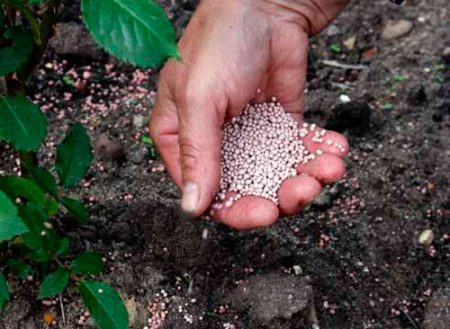 Why gardeners are wondering how to feed tomatoes in a greenhouse 2 weeks after planting? Because, the main goal is to get a good harvest, fruits of excellent taste. To do this, the plants themselves need a proper and balanced diet, which is what additional nutrition helps.
Why gardeners are wondering how to feed tomatoes in a greenhouse 2 weeks after planting? Because, the main goal is to get a good harvest, fruits of excellent taste. To do this, the plants themselves need a proper and balanced diet, which is what additional nutrition helps.
Tomatoes belong to the family of nightshade plants. They are characterized by the fact that they are responsive to any type of fertilizer for the soil or outside the root top dressing. But you need to understand that any approvals or sprayings are done neatly and reasonably. If you overfeed the plant, then there will be little sense from it, as with insufficient nutrition. Do you know, tomatoes: the best varieties for open ground undersized?
The best fertilizers for tomatoes:
- Potassium. Lack of potassium can slow the growth of tomatoes. Actively involved in the formation of stems. If the leaves accumulate a lot of ammonia nitrogen due to a lack of potassium, then they begin to die.
- Phosphorus. Due to the lack of stems, they become brittle and lethargic, a purple hue appears on them.
- Nitrogen. Shortage leads to poor fruit formation.
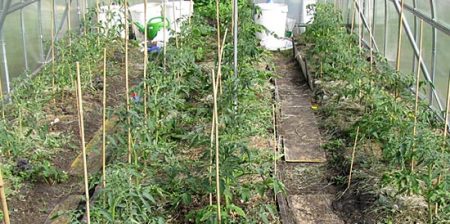
When to deposit and how
The first time you think about how to feed tomatoes in a greenhouse, you need not 2 weeks after planting, but immediately after planting young bushes. A sufficient amount of compote or humus should be put in the holes, then sprinkle everything with ash. In compost (humus) there are a lot of minerals, and ash enrich the soil with macro elements. Tomatoes with this fertilizer will begin to grow actively, to tie fruits.
Interesting! Some gardeners are convinced that feeding bushes after they are buried in the ground is not worth it. They claim: the first top dressing is carried out only 14 days after transplanting tomatoes to a permanent place. But experts are confident that such restraint can lead to injury to the plant.
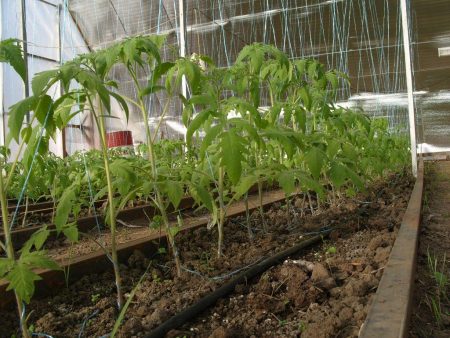
Green tea dressing
14 days after disembarkation, a second top dressing can be carried out. An organic fertilizer called green tea is used. It will be easy to cook it yourself. You need to take herbs: nettle, horsetail, plantain, any weeds. To them add a bucket of liquid mullein, pour 250 grams of wood ash. Pay attention to the information how to plant tomatoes in a polycarbonate greenhouse.
Advice! Five kilograms of green weeds is taken for five tens of liters of water, which must be finely chopped. An additional mullein (bucket), 250 grams of ash is poured. Mix everything and leave for a couple of days. Then bring to a quantity of 100 liters and pour each bush with two liters of the composition.
Fertilizers of the mineral type can stimulate the growth of green mass, but organic fertilizers will enhance flowering. But, if organic type fertilizers are not at hand, then you can use any complex fertilizers of mineral composition that are at hand.
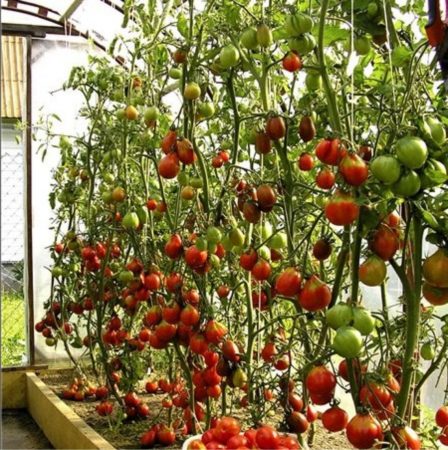
Mineral fertilizers for feeding after 14 days (per ten liters of water):
- 25 grams of nitrogen;
- 40 grams of phosphorus;
- 15 grams of potash fertilizer;
Advice! Pour a liter of the mixture for each plant.
The next feeding of tomatoes will need to be carried out after the beginning of flowering. In ten liters of water, a tablespoon of potassium sulfate, 500 grams of bird droppings, 500 grams of liquid mullein are bred. One and a half liters of solution is used for each well.
Advice! When there is no organic fertilizer, you can dissolve a tablespoon of nitrophoska in a bucket of water and fertilize the tomatoes during flowering.Take a liter of solution for each bush. This, by the way, is also a great way to prevent rot on tomatoes.
When else to fertilize:
- When the ovaries begin to form, it will be necessary to dilute 10 grams of boric acid in two liters of wood water. Pour all this into 10 liters of water. Leave the solution for a day, and then pour a liter on each bush. This will accelerate the ripening and fruit formation.
- Root top dressing last carried out when the bushes began to bear fruit. It improves the final taste of red fruits, and also contributes to their active growth. Two large spoons of superphosphate and a tablespoon of liquid sodium humate are diluted in ten liters of water.
When nutrients are in short supply
Tomatoes brightly in appearance and changes on the leaves and stems inform about what they may miss during the growth period.
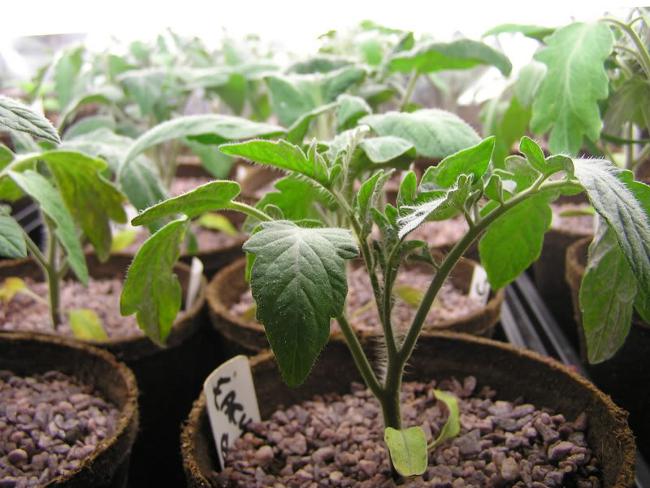
How to determine the deficit:
- Not enough phosphorus. The stems and lower parts of the leaves acquire a purple hue. The plant must be sprayed with a solution of superphosphate. If done correctly, the purple hue will disappear within 20 hours.
- Not enough calcium. The leaves begin to curl inward. On the fruits appears rot in their upper part. It is necessary to carry out root dressing with calcium nitrate.
- Lack of nitrogen. The bushes have a faint green hue, can be colored yellow, the bushes lag behind in growth. Root top dressing with herbal tea will help; you can spray with a weak solution of urea.
This is just general information about how to feed tomatoes in the greenhouse 2 weeks after planting. Each gardener will have his own secrets and observations. For example, for different types of tomatoes, different mineral or organic fertilizers can be used. All this also needs to be considered.




 Low-growing tomatoes, without pinching: 5 of the most delicious varieties
Low-growing tomatoes, without pinching: 5 of the most delicious varieties Why tomato seedlings grow poorly
Why tomato seedlings grow poorly We grow a tomato in a shell
We grow a tomato in a shell Growing tomatoes without watering according to the method of Kazarin
Growing tomatoes without watering according to the method of Kazarin